The Franklin County Historical Society and Museum in Pasco, Washington, includes several displays of American Indian artifacts, both historic and prehistoric. With record to prehistoric American Indians, the museum display mentions the Marmes Rockshelter, which is one of the oldest archaeological sites in the Columbia Plateau.
For thousands of years, the ancestors of today’s American Indians occupied the area along the Columbia River. Archaeologists have found some of the earliest evidence of human occupation at the Marmes Rockshelter. Occupation at this site dates back to 11,250 BCE.
By 9700 BCE, Indian people using the Marmes Rockshelter were cremating their dead. In their book Archaeology in Washington, Ruth Kirk and Richard Daugherty report:
“Apparently the same corner of the rockshelter has been repeatedly used for cremations, perhaps spaced decades apart. The resulting hearth measured about 10 feet across.”
Within the hearth were the bones of at least six people: three adults and three children between the ages of 8 and 14.
With regard to the mortuary practices at the Marmes Rockshelter, anthropologist James Chatters, in his book Ancient Encounters: Kennewick Man and the First Americans, writes:
“Marmes Rockshelter, it seems, had been an ancient crematorium.”
Prior to cremation, the bones of the dead are cleaned of their flesh.
Ochre and large implements were used as offerings. Contact with the Pacific Coast indicated by Olivella shells in the cremation pit.
With regard to the archaeological data uncovered at the Marmes Rockshelter, E.S. Lohse and Roderick Sprague, in their chapter in the Handbook of North American Indians, write:
“Diagnostic artifacts included leaf-shaped and stemmed stone projectile points, lanceolate and ovate shaped knives, large stone scrapers and choppers, polyhedral stone cores and prismatic blades, bone awls, bone needles, and bone atlatl spurs. Broken food bone showed that aboriginal inhabitants were taking and eating deer, elk, pronghorn antelope, jackrabbit, cottontail rabbit, and beaver. Freshwater mussels from the Palouse River had been gathered and eaten as well.”
A grass lined pit at the Marmes Rockshelter indicates that the people storing some food, although this does not appear to have been a major part of the subsistence pattern.
With regard to the archaeological importance of the Marmes Rockshelter, Kenneth Ames, Don Dumond, Jerry Galm, and Rick Minor, in their chapter in the Handbook of North American Indians write:
“However, the site is unusual: it is one of the few excavated rockshelters dating to this period; its artifact assemblages are unusually diverse (containing artifacts such as very small bone needles, which seldom occur elsewhere); and it was used for burials throughout this period, which makes it unique.”
According to the Museum display:
“These prehistoric residents of the continent ranged widely using travel routes along the Pacific shorelines and inland waterways to gather plant foods, hunt small and large mammals. They also sought favorable salmon fishing sites after the great ice sheets melted.”
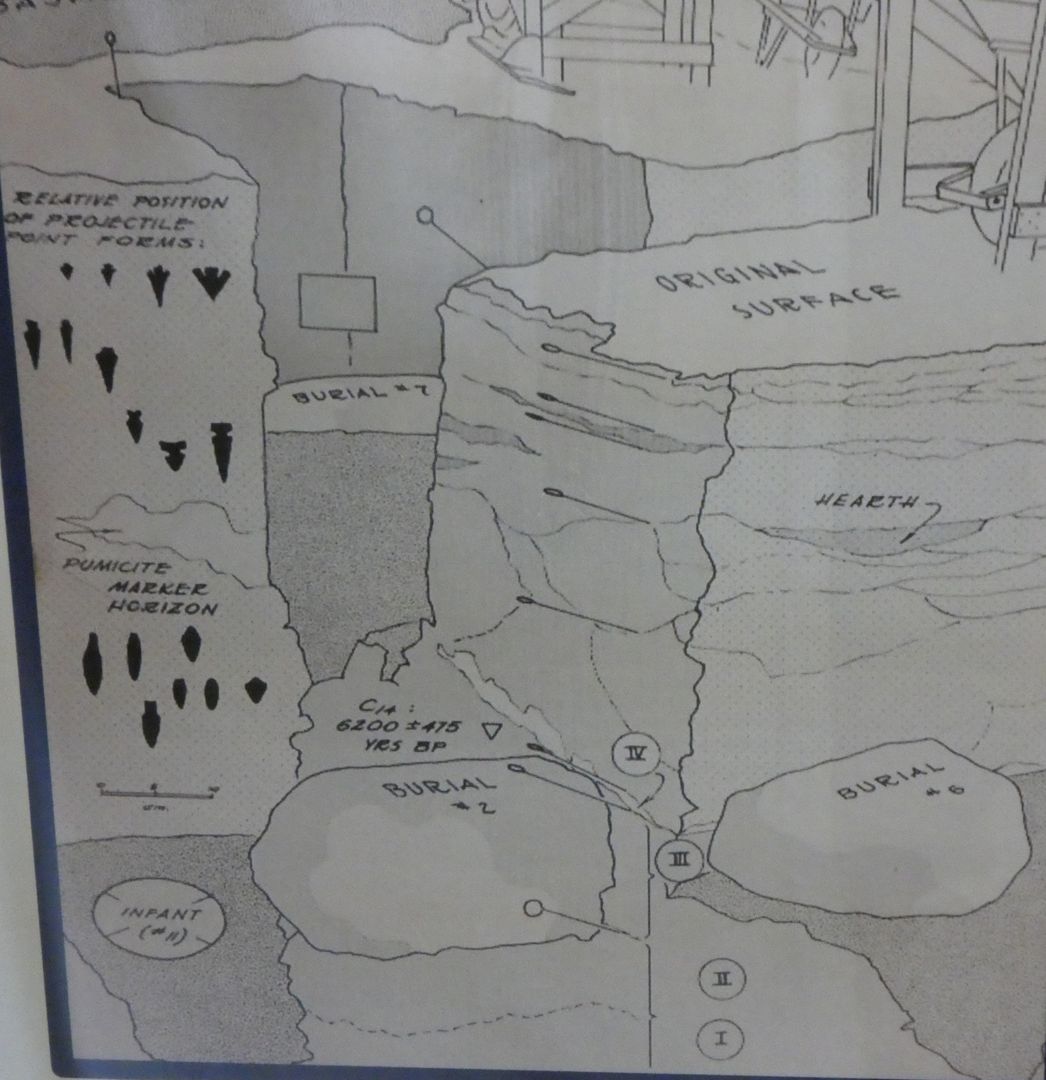 Shown above is the stratigraphy of the Marmes Rockshelter.
Shown above is the stratigraphy of the Marmes Rockshelter. 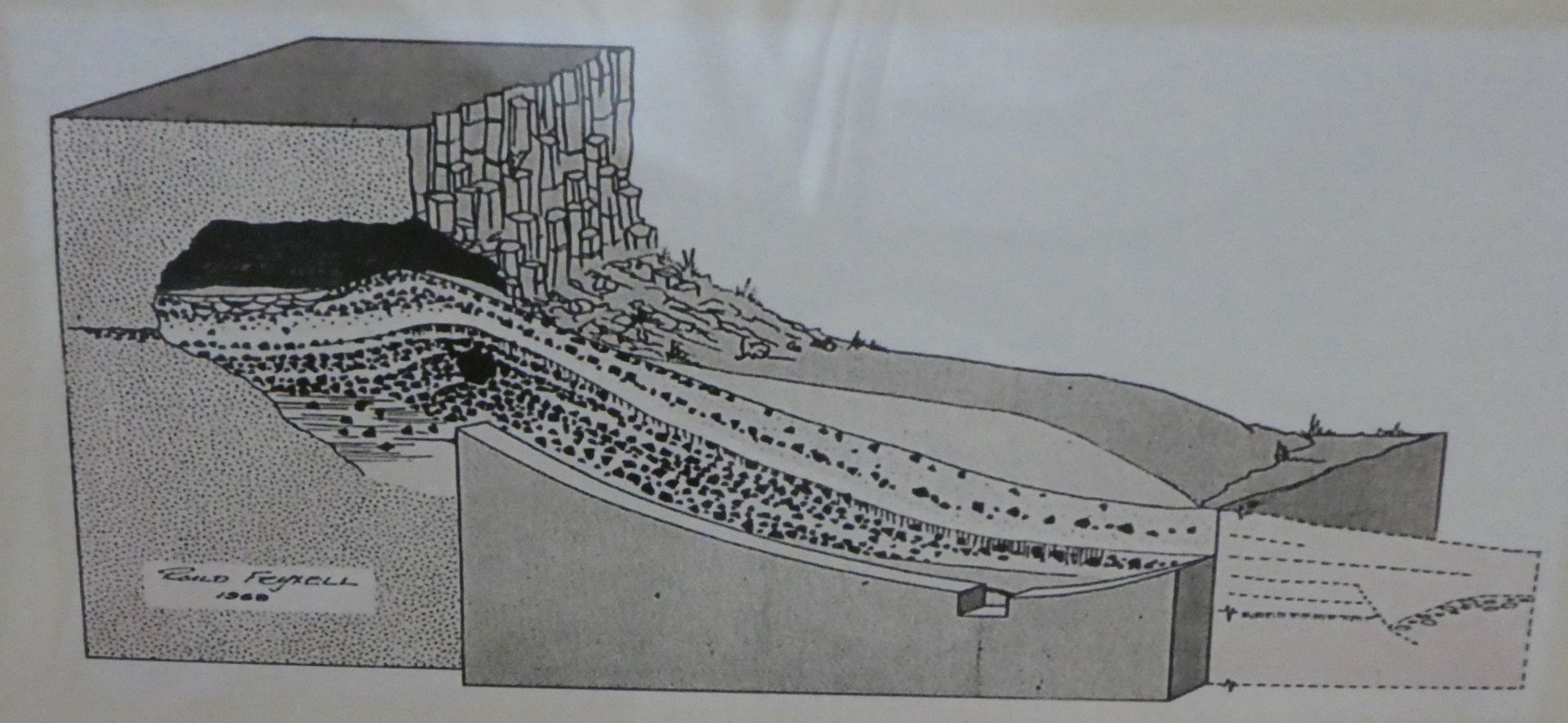 Shown above is another diagram of the site.
Shown above is another diagram of the site. 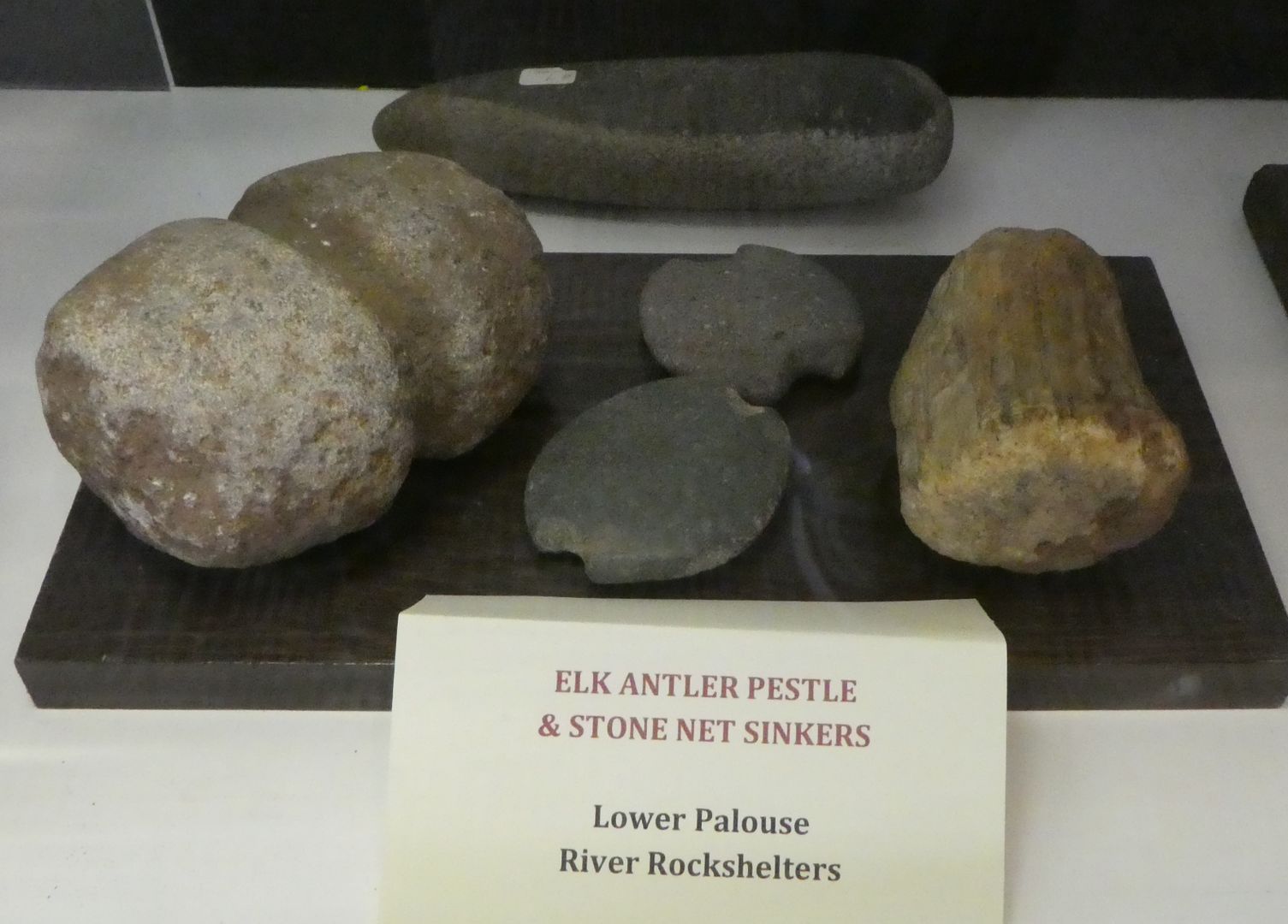
 Shown above is a pestle used for grinding seeds and nuts, and a hammer stone.
Shown above is a pestle used for grinding seeds and nuts, and a hammer stone. 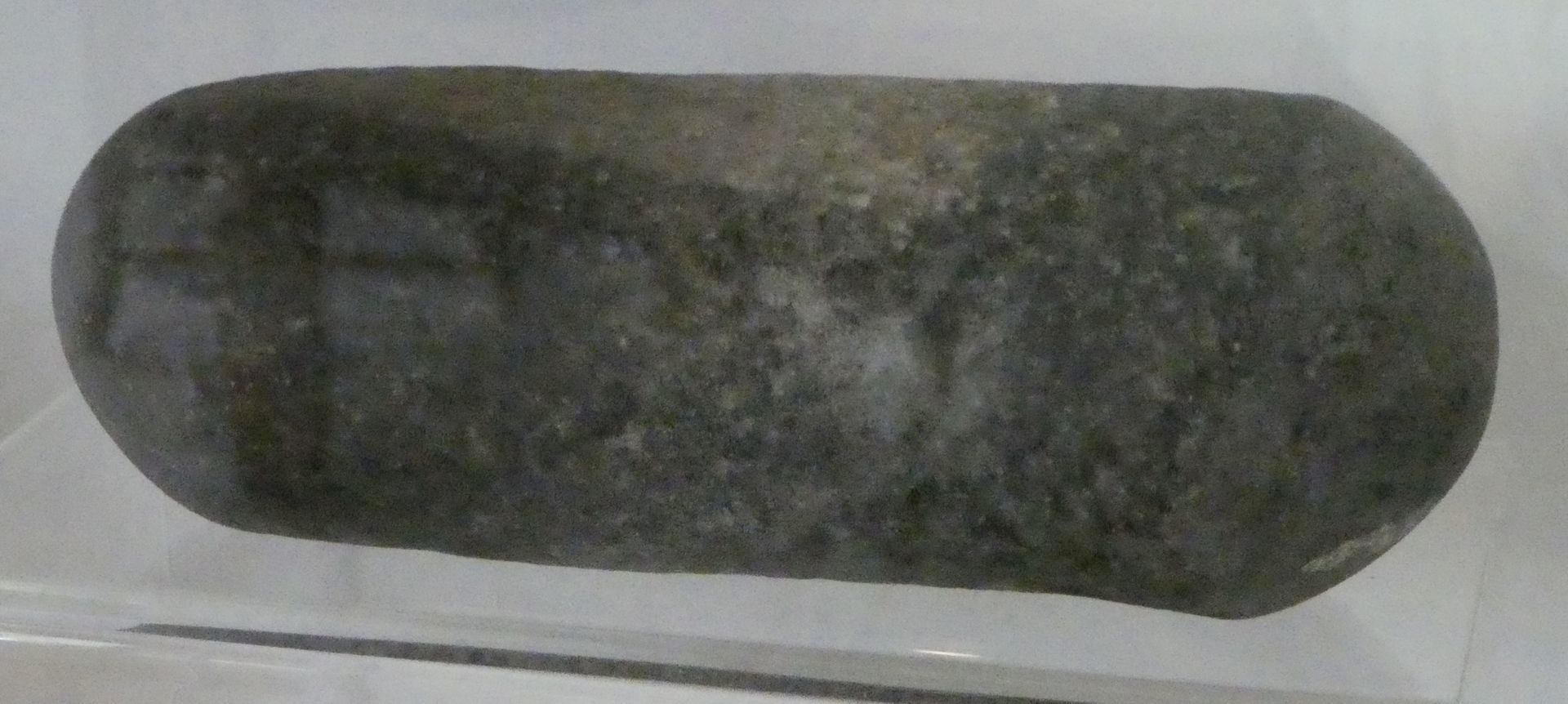 Shown above is another grinding stone.
Shown above is another grinding stone. 
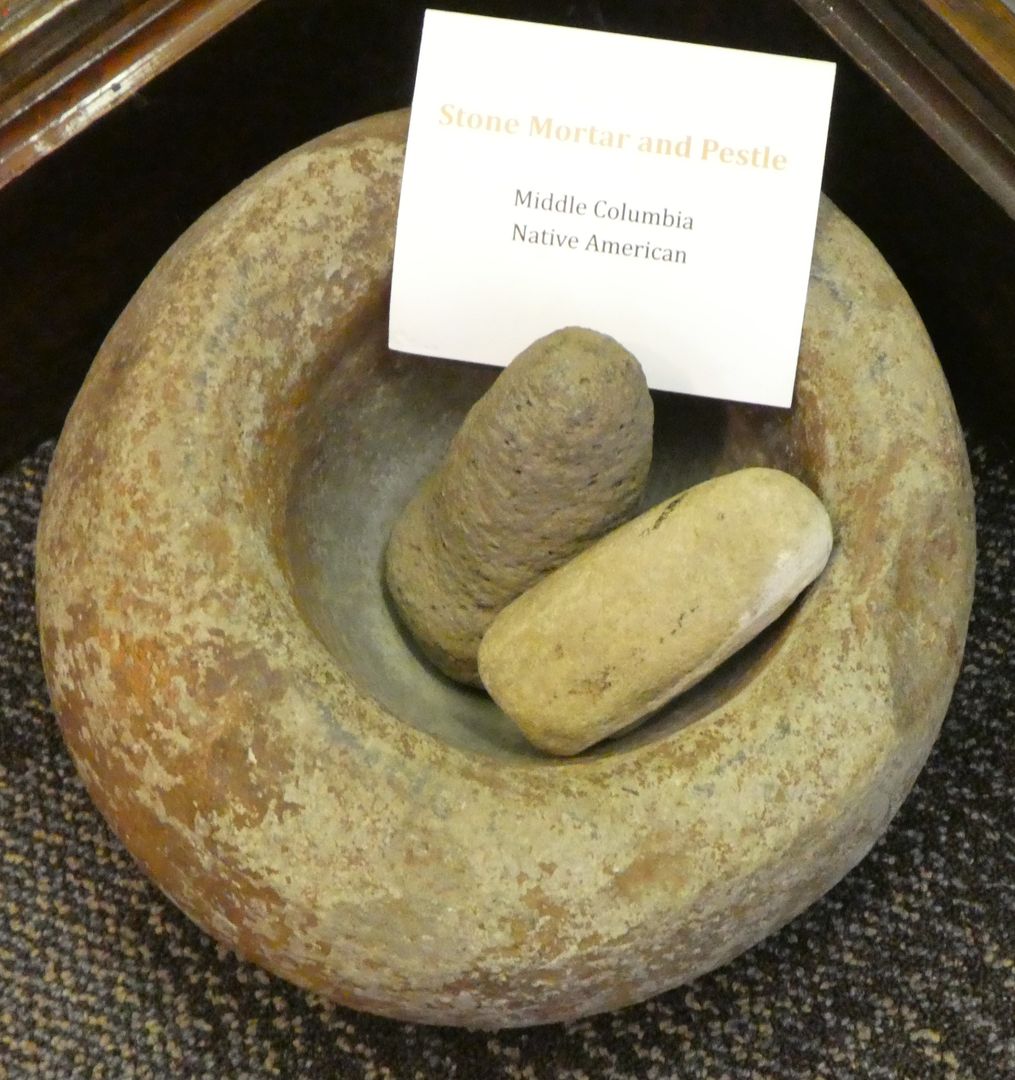
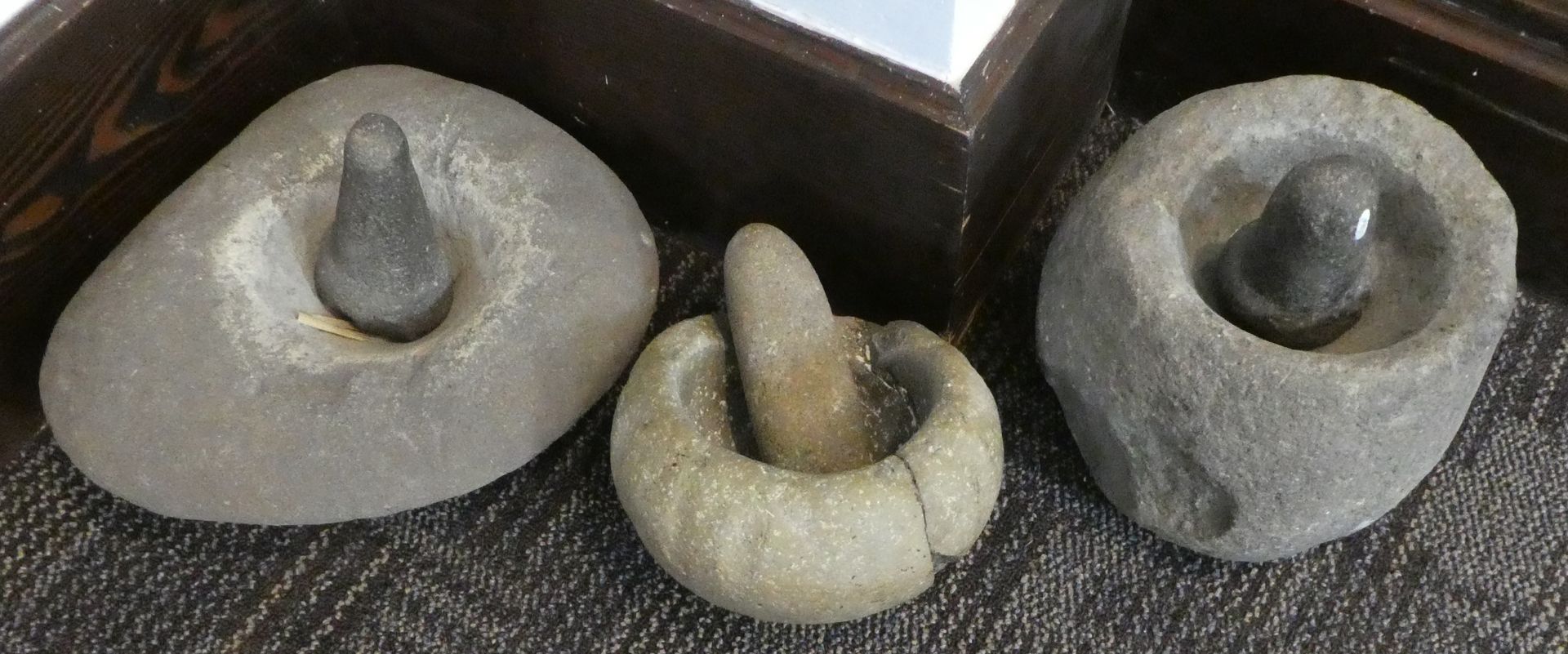
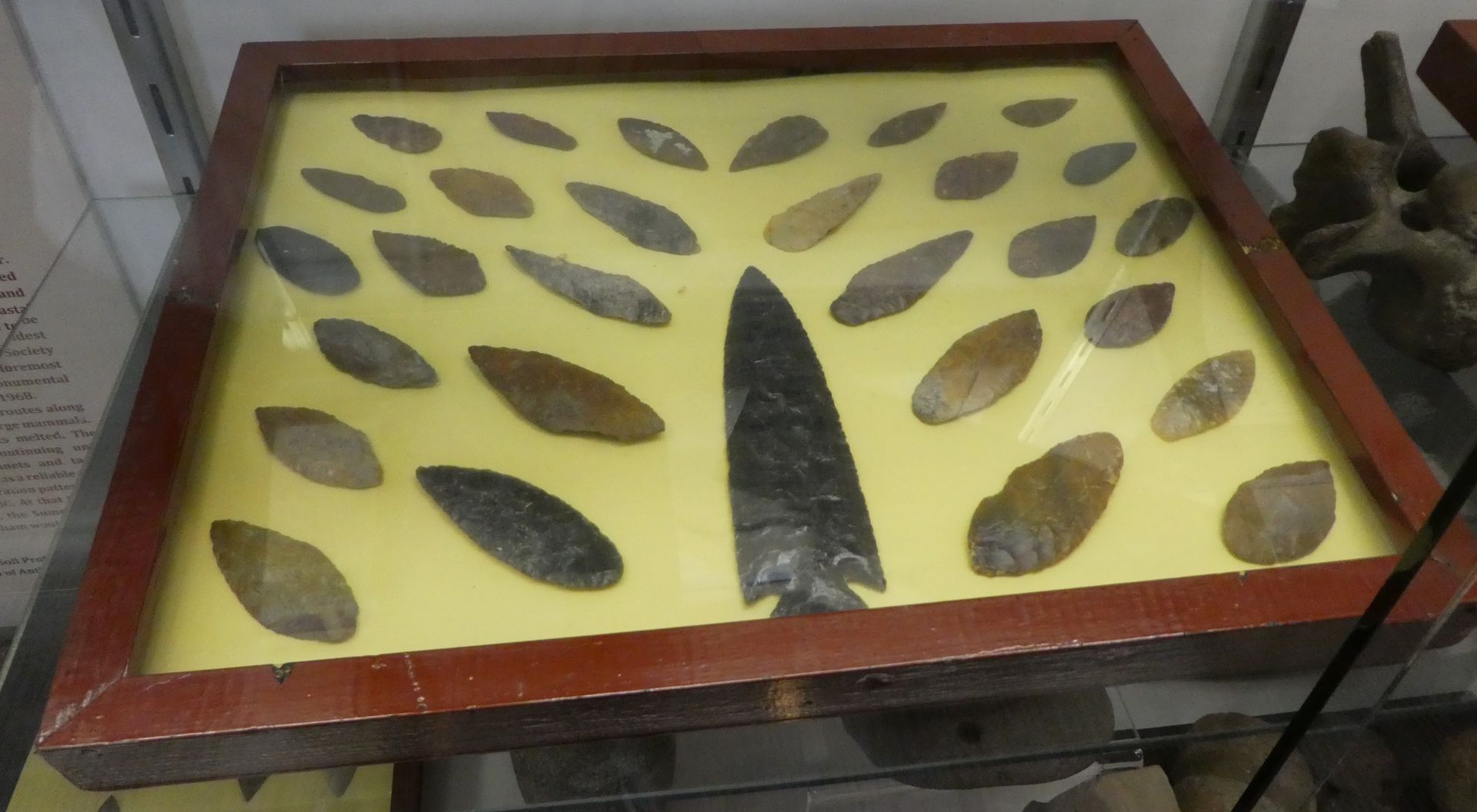 Shown above is a collection of spear points and scrapers, often called “arrowheads” although none of these were probably used on arrows. Once out of the ground, artifacts like these have little value in actually documenting prehistory.
Shown above is a collection of spear points and scrapers, often called “arrowheads” although none of these were probably used on arrows. Once out of the ground, artifacts like these have little value in actually documenting prehistory.  Many of the artifacts in this collection are actually arrowheads although the larger ones were probably spearpoints.
Many of the artifacts in this collection are actually arrowheads although the larger ones were probably spearpoints. 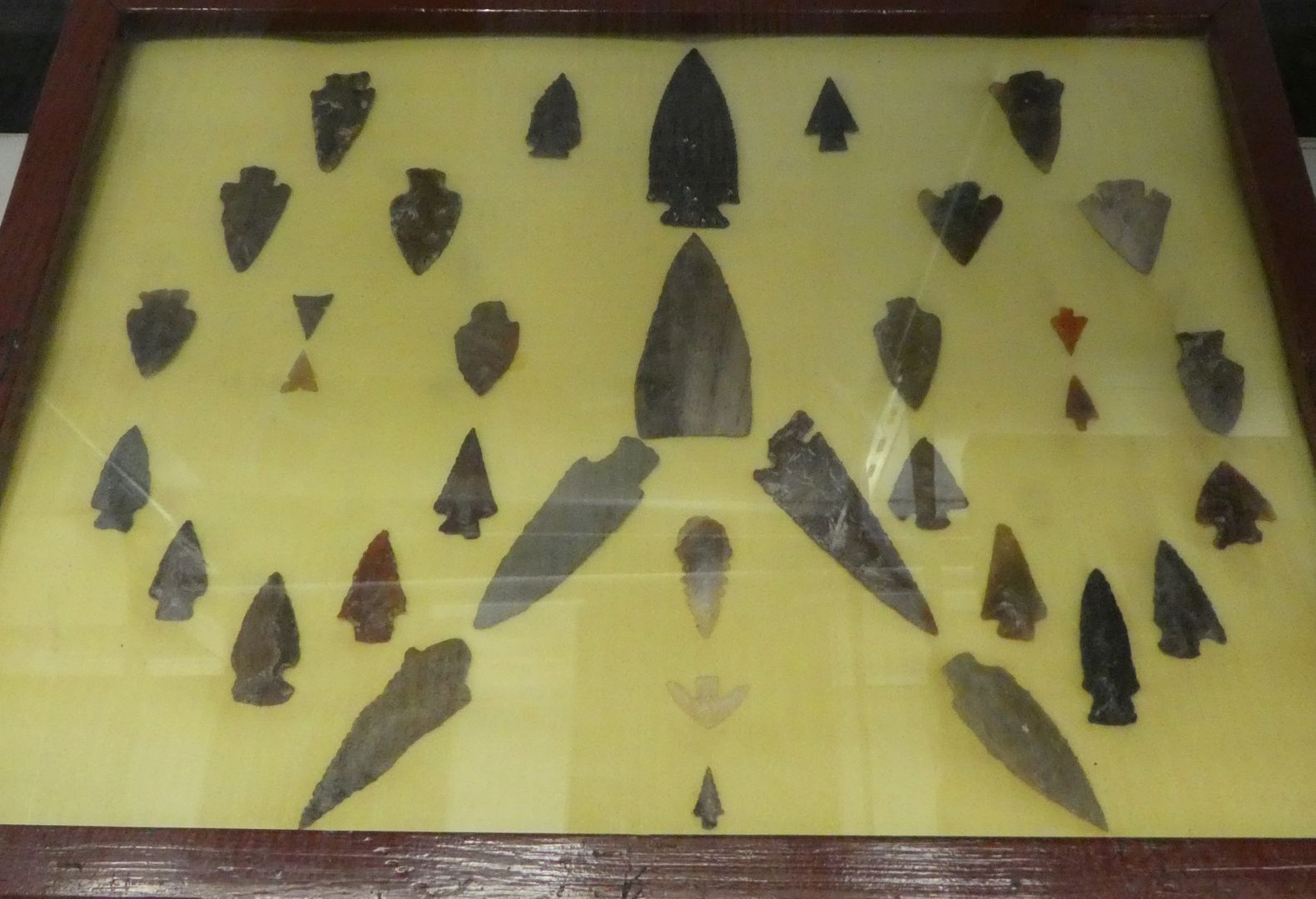 Shown above are both arrowheads and spearpoints.
Shown above are both arrowheads and spearpoints.
Overall, James Chatters and David Pokotylo, in their chapter in the Handbook of North American Indians, have suggested a broad prehistoric chronology for the Plateau Culture Area:
- Early Period from the end of the Ice Ages to 6000 BCE. James Chatters and David Pokotylo write: “Climates were initially more continental than they are today and were characterized by greater seasonal variation in temperature.”
- Middle Period from 6000 BCE to 2000 BCE. Climatic conditions were warmer than today, but there is a shift from a continental pattern to a maritime pattern. In the Columbia Basin, grasslands were replaced by shrub steppes.
- Late Period from 2000 BCE to 1720 CE. At the beginning of this time period, temperatures declined sharply.
Ancient America
Ancient America: Carved Stone Figures in the Plateau (Photo Diary)
Ancient America: Stone Artifacts from the Columbia Plateau (Photo Diary)
Ancient America: Life in a California Rock Shelter (Photo Diary)
Ancient America: Columbia River Rock Art (Photo Diary)
Ancient America: The Great Basin Archaic
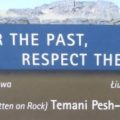
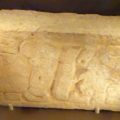
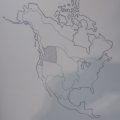
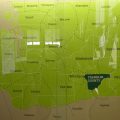
Leave a Reply